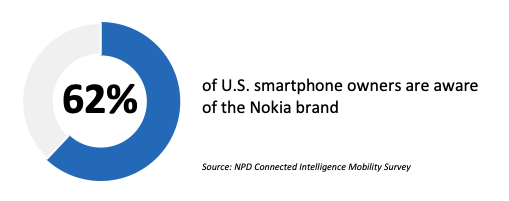
Dish loans spectrum to future rivals
Last week we reported about the FCC’s “Keep Americans Connected” pledge with almost all service providers announcing incentives to ensure their customers have access to fast connectivity during these difficult periods. Incentives such as additional data caps or plan upgrades to unlimited data have naturally resulted in a substantial surge in network traffic and service providers have reached out to idle spectrum holders for assistance. Dish and several other spectrum holders including Comcast have granted their idle AWS-3 spectrum to all major providers free of charge for sixty day.
The NPD Take:
- With tens of millions of Americans having to work/study from home, broadband and wireless carriers have been experiencing major capacity pressures on their networks due to the surge in data traffic. The additional spectrum granted by Dish (and others) will help the carriers continue to provide robust connectivity to their customers. Nevertheless, data traffic will continue to climb upwards as more people stay put due to the lock-down measures get stricter in the following days. Many OTT providers such as Netflix and Disney have begun limiting streaming quality in several European countries, and we should expect seeing similar measures in the US.
- Dish is expected to begin building a new mobile service infrastructure to serve the 8+ million Boost Mobile subscribers it will acquire from Sprint following the merger completion. This philantrophic cooperation with future rivals should help Dish in future spectrum/roaming deals.
U.S. carriers close down retail stores
In response to the spreading of the COVID-19, all major U.S. carriers last week announced that they will be closing down the majority of their retail locations throughout the nation. AT&T announced that it will close down 40% of its stores while reducing the hours of operation. T-Mobile announced a 80% reduction in the availability of its company-owned retail stores. Sprint was exceptionally specific with its close-down measures as the carrier announced the closure of 71% of its retail outlets. Verizon, on the other hand, did not provide any specific figures except noting that it will reduce its active stores during the lock-down. Notably, Apple last week announced a similar measure with all of its global retail outlets being closed with the exception of mainland China.
The NPD Take:
- While more and more U.S. consumers ditch retail in favor of online shopping, the U.S. mobile landscape is a bit different as the carrier retail channel account for close to 70% of new device activations. The (rightful) closure of retail locations is going to be a major blow to smartphone OEMs, which were eagerly hoping to see the upgrade/replacement cycles accelerate with innovative design and technologies such as 5G and foldables.
- There is no question that the store closures will put tremendous pressure on the carriers’ bottomline, but there is somewhat of a bright side of the story. Wireless carriers typically lose money when an existing or a new customer buys a new smartphone, because they are the ones taking on the debt for offering the financing and promotional incentives. The closure of the stores will undoubtedly lower new device activations. There is also the fact that some of the major carriers dealing with high churn will likely see a sharp decline in this metric due to store closures and the augmented necessity in being connected (consumers will not take the risk of porting numbers when customer service and operations are limited).
Nokia joins the 5G smartphone game
HMD, which holds the rights to the once-popular Nokia brand, last week announced a handful of new models including the new Nokia 8.3 5G smartphone. HMD touts the new 8.3 as “the world’s first truly global” 5G smartphone as its range of 5G band supports is unmatched by any existing 5G smartphone in the market. Maybe so, but it doesn’t have mmWave support which is key in the US market. The new 8.3 runs on Qualcomm’s lower-tier 765G processor and boasts a 64-megapixel camera that has the capability of capturing 4K video. The 6.8-inch display flagship phone will commercially debut later this summer at 599 Euros (around $645).
The NPD Take:
- Despite being off the grid for a long time, Nokia still enjoys an incredible high awareness rate among U.S. consumers. Over 60% of U.S. smartphone owners are familiar with the brand, and that’s the main reason why carriers like Verizon and AT&T have brought it back to their selections. On the other hand, the new 8.3 will not be able to secure carrier commitment at these carriers as it does not support high-band mmWave 5G bands.
- Nokia’s starting affordable price point on the upcoming 8.3 model is in parallel with carrier 5G strategies. Carriers need to boost their 5G user bases for fast ROI on their network deployments. Affordable 5G flagships such as the Nokia 8.3 will help them balance the financial burden of heavily subsidizing top-tier 5G phones such as the Samsung Galaxy S20.


